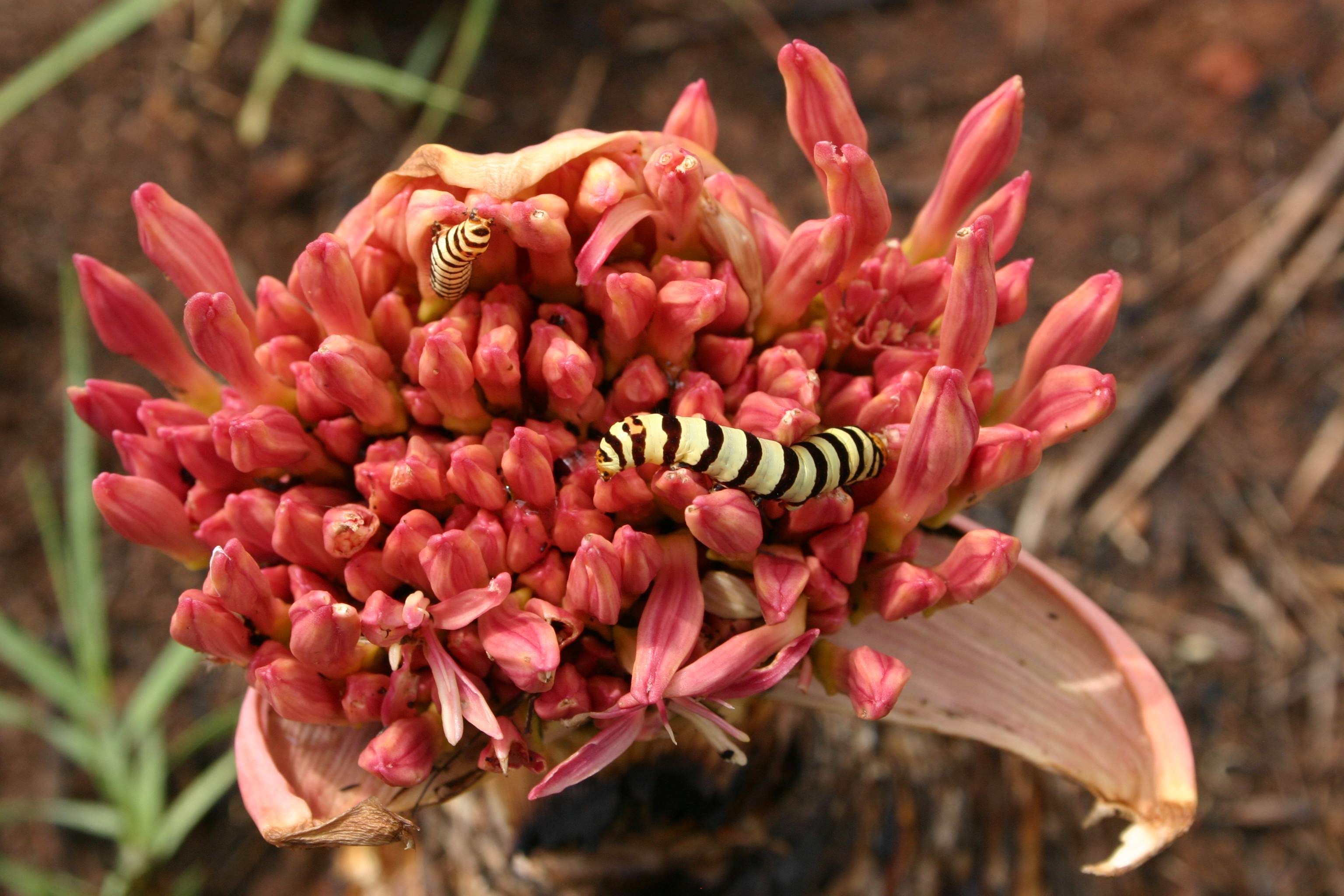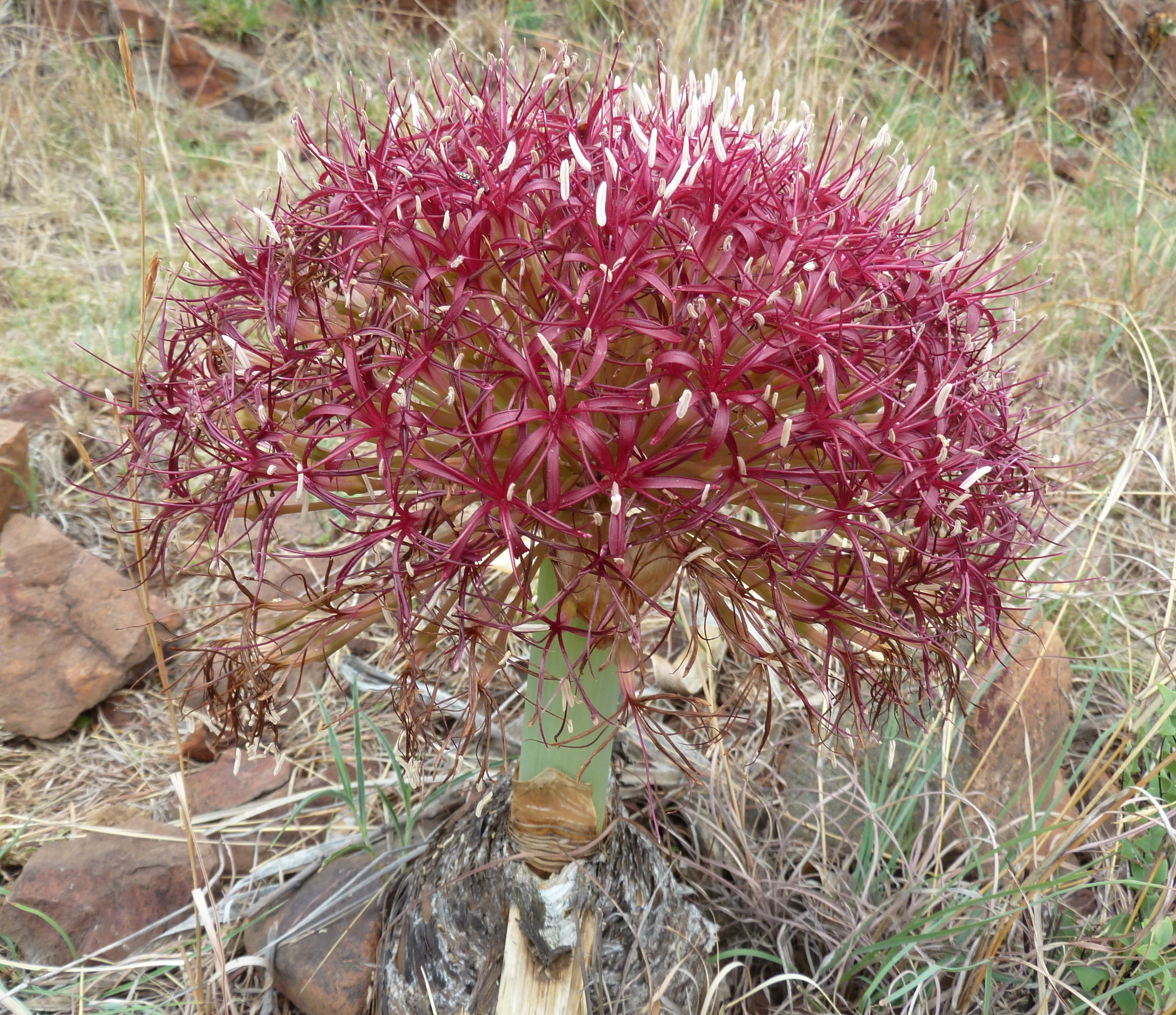|
Boophone Disticha
''Boophone'' is a small genus of herbaceous, perennial and bulbous plants in the Amaryllis family (Amaryllidaceae, subfamily Amaryllidoideae.) It consists of two confirmed species distributed across South Africa to Kenya and Uganda. It is closely related to ''Crossyne'', a genus whose species have prostrate leaves. They are drought tolerant but not cold-hardy, and are very poisonous to livestock. Taxonomy ''Boophone'' is the single genus in subtribe Boophoninae, in the Amaryllideae tribe. Phylogeny Boophoninae are placed within Amaryllideae as follows, based on their phylogenetic relationship: Species The list of ''Boophone'' species, with their complete scientific name, authority, and geographic distribution is given below.Royal Botanical Gardens, KewWorld Checklist of Monocotyledons: ''Boophone '' Accessed May 16, 2009. Etymology William Herbert wrote the name of this genus with three different orthographies: "Boophane" in 1821; "Buphane" and "Buphone" in 1825 ... [...More Info...] [...Related Items...] OR: [Wikipedia] [Google] [Baidu] |
William Herbert (botanist)
The Hon. William Herbert (12 January 1778 – 28 May 1847) was a British botanist, botanical illustrator, poet, and clergyman. He served as a member of parliament for Hampshire from 1806 to 1807, and for Cricklade from 1811 to 1812. His botanical writings are noted for his treatment of Amaryllidaceae. Life He was the third son and fifth child of Henry Herbert, 1st Earl of Carnarvon, by Lady Elizabeth Alicia Maria, eldest daughter of Charles Wyndham, 2nd Earl of Egremont. He was born on 12 January 1778, and was educated at Eton College. On 16 July 1795 Herbert matriculated at Christ Church, Oxford, but soon migrated to Exeter College, where he graduated B.A. on 6 June 1798. Subsequently, moving to Merton College, he proceeded M.A. 23 November 1802, B.C.L. 27 May 1808, D.C.L. 2 June 1808, and B.D. 25 June 1840. In a political career, he was elected M.P. for Hampshire in 1806, and for Cricklade in 1811, and also seems to have practised at the bar. But soon after retiring from ... [...More Info...] [...Related Items...] OR: [Wikipedia] [Google] [Baidu] |
Scientific Name
In taxonomy, binomial nomenclature ("two-term naming system"), also called nomenclature ("two-name naming system") or binary nomenclature, is a formal system of naming species of living things by giving each a name composed of two parts, both of which use Latin grammatical forms, although they can be based on words from other languages. Such a name is called a binomial name (which may be shortened to just "binomial"), a binomen, name or a scientific name; more informally it is also historically called a Latin name. The first part of the name – the '' generic name'' – identifies the genus to which the species belongs, whereas the second part – the specific name or specific epithet – distinguishes the species within the genus. For example, modern humans belong to the genus ''Homo'' and within this genus to the species ''Homo sapiens''. ''Tyrannosaurus rex'' is likely the most widely known binomial. The ''formal'' introduction of this system of naming species is credit ... [...More Info...] [...Related Items...] OR: [Wikipedia] [Google] [Baidu] |
Diaphone (moth)
''Diaphone'' is a genus of moths of the family Noctuidae. Species * ''Diaphone angolensis'' Weymer, 1901 * ''Diaphone delamarei'' Viette, 1962 * ''Diaphone eumela'' (Stoll, 782 * ''Diaphone lampra'' Karsch, 1894 * ''Diaphone mossambicensis'' Hopffer, 1862 * ''Diaphone niveiplaga The diaphone is a noisemaking device best known for its use as a foghorn: It can produce deep, powerful tones, able to carry a long distance. Although they have fallen out of favor, diaphones were also used at some fire stations and in other sit ...'' Carcasson, 1965 * '' Diaphone rungsi'' Laporte, 1973 ReferencesNatural History Museum Lepidoptera genus database Glottulinae {{Glottulinae-stub ... [...More Info...] [...Related Items...] OR: [Wikipedia] [Google] [Baidu] |
Brithys
''Brithys'' is a genus of moths of the family Noctuidae The Noctuidae, commonly known as owlet moths, cutworms or armyworms, are a family of moths. They are considered the most controversial family in the superfamily Noctuoidea because many of the clades are constantly changing, along with the other f .... It includes three species. Species *'' Brithys crini'' – Lily Borer Fabricius, 1775 ReferencesNatural History Museum Lepidoptera genus database Glottulinae {{Glottulinae-stub ... [...More Info...] [...Related Items...] OR: [Wikipedia] [Google] [Baidu] |
Western Cape Province
The Western Cape is a province of South Africa, situated on the south-western coast of the country. It is the fourth largest of the nine provinces with an area of , and the third most populous, with an estimated 7 million inhabitants in 2020. About two-thirds of these inhabitants live in the metropolitan area of Cape Town, which is also the provincial capital. The Western Cape was created in 1994 from part of the former Cape Province. The two largest cities are Cape Town and George. Geography The Western Cape Province is roughly L-shaped, extending north and east from the Cape of Good Hope, in the southwestern corner of South Africa. It stretches about northwards along the Atlantic coast and about eastwards along the South African south coast (Southern Indian Ocean). It is bordered on the north by the Northern Cape and on the east by the Eastern Cape. The total land area of the province is , about 10.6% of the country's total. It is roughly the size of England or the St ... [...More Info...] [...Related Items...] OR: [Wikipedia] [Google] [Baidu] |
Namibia
Namibia (, ), officially the Republic of Namibia, is a country in Southern Africa. Its western border is the Atlantic Ocean. It shares land borders with Zambia and Angola to the north, Botswana to the east and South Africa to the south and east. Although Kazungula, it does not border Zimbabwe, less than 200 metres (660 feet) of the Botswanan right bank of the Zambezi, Zambezi River separates the two countries. Namibia gained independence from South Africa on 21 March 1990, following the Namibian War of Independence. Its capital and largest city is Windhoek. Namibia is a member state of the United Nations (UN), the Southern African Development Community (SADC), the African Union (AU) and the Commonwealth of Nations. The driest country in sub-Saharan Africa, Namibia has been inhabited since pre-historic times by the San people, San, Damara people, Damara and Nama people. Around the 14th century, immigration, immigrating Bantu peoples arrived as part of the Bantu expansion. Since ... [...More Info...] [...Related Items...] OR: [Wikipedia] [Google] [Baidu] |
Boophone Haemanthoides
''Boophone haemanthoides'' is a plant species native to Namibia and the Cape Provinces of South Africa. It is a bulb-forming herb with more than half of its scaly bulb appearing above ground. It produces a rather large umbel In botany, an umbel is an inflorescence that consists of a number of short flower stalks (called pedicels) that spread from a common point, somewhat like umbrella ribs. The word was coined in botanical usage in the 1590s, from Latin ''umbella'' "p ... of pink flowers with narrow tepals. References {{Taxonbar, from=Q15502902 Amaryllidoideae Flora of Namibia Flora of the Cape Provinces ... [...More Info...] [...Related Items...] OR: [Wikipedia] [Google] [Baidu] |
Boophone Haemanthoides01
''Boophone'' is a small genus of herbaceous, perennial and bulbous plants in the Amaryllis family (Amaryllidaceae, subfamily Amaryllidoideae.) It consists of two confirmed species distributed across South Africa to Kenya and Uganda. It is closely related to ''Crossyne'', a genus whose species have prostrate leaves. They are drought tolerant but not cold-hardy, and are very poisonous to livestock. Taxonomy ''Boophone'' is the single genus in subtribe Boophoninae, in the Amaryllideae tribe. Phylogeny Boophoninae are placed within Amaryllideae as follows, based on their phylogenetic relationship: Species The list of ''Boophone'' species, with their complete scientific name, authority, and geographic distribution is given below.Royal Botanical Gardens, KewWorld Checklist of Monocotyledons: ''Boophone '' Accessed May 16, 2009. Etymology William Herbert wrote the name of this genus with three different orthographies: "Boophane" in 1821; "Buphane" and "Buphone" in 1825. ... [...More Info...] [...Related Items...] OR: [Wikipedia] [Google] [Baidu] |
South Africa
South Africa, officially the Republic of South Africa (RSA), is the southernmost country in Africa. It is bounded to the south by of coastline that stretch along the South Atlantic and Indian Oceans; to the north by the neighbouring countries of Namibia, Botswana, and Zimbabwe; and to the east and northeast by Mozambique and Eswatini. It also completely enclaves the country Lesotho. It is the southernmost country on the mainland of the Old World, and the second-most populous country located entirely south of the equator, after Tanzania. South Africa is a biodiversity hotspot, with unique biomes, plant and animal life. With over 60 million people, the country is the world's 24th-most populous nation and covers an area of . South Africa has three capital cities, with the executive, judicial and legislative branches of government based in Pretoria, Bloemfontein, and Cape Town respectively. The largest city is Johannesburg. About 80% of the population are Black South Afri ... [...More Info...] [...Related Items...] OR: [Wikipedia] [Google] [Baidu] |
Sudan
Sudan ( or ; ar, السودان, as-Sūdān, officially the Republic of the Sudan ( ar, جمهورية السودان, link=no, Jumhūriyyat as-Sūdān), is a country in Northeast Africa. It shares borders with the Central African Republic to the southwest, Chad to the west, Egypt to the north, Eritrea to the northeast, Ethiopia to the southeast, Libya to the northwest, South Sudan to the south and the Red Sea. It has a population of 45.70 million people as of 2022 and occupies 1,886,068 square kilometres (728,215 square miles), making it Africa's List of African countries by area, third-largest country by area, and the third-largest by area in the Arab League. It was the largest country by area in Africa and the Arab League until the 2011 South Sudanese independence referendum, secession of South Sudan in 2011, since which both titles have been held by Algeria. Its Capital city, capital is Khartoum and its most populated city is Omdurman (part of the metropolitan area of Khar ... [...More Info...] [...Related Items...] OR: [Wikipedia] [Google] [Baidu] |
Herb
In general use, herbs are a widely distributed and widespread group of plants, excluding vegetables and other plants consumed for macronutrients, with savory or aromatic properties that are used for flavoring and garnishing food, for medicinal purposes, or for fragrances. Culinary use typically distinguishes herbs from spices. ''Herbs'' generally refers to the leafy green or flowering parts of a plant (either fresh or dried), while ''spices'' are usually dried and produced from other parts of the plant, including seeds, bark, roots and fruits. Herbs have a variety of uses including culinary, medicinal, aromatic and in some cases, spiritual. General usage of the term "herb" differs between culinary herbs and medicinal herbs; in medicinal or spiritual use, any parts of the plant might be considered as "herbs", including leaves, roots, flowers, seeds, root bark, inner bark (and cambium), resin and pericarp. The word "herb" is pronounced in Commonwealth English, but is common am ... [...More Info...] [...Related Items...] OR: [Wikipedia] [Google] [Baidu] |



